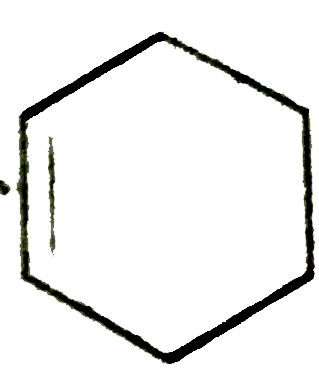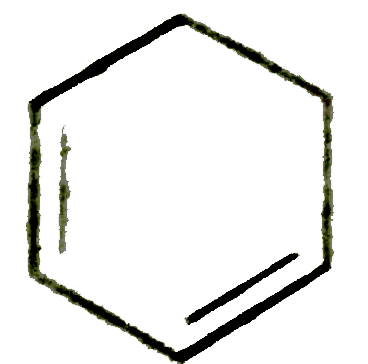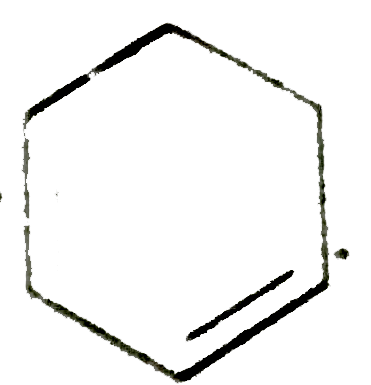Find the electron affinity of chlorine from the following data. Enthalpy of formation of LiCI is −97.5kcalmol−1, lattice energy of LiCI=−197.7kcalmol−1. Dissociation energy of chlirine is 57.6kcalmol−1, sublimation enthalpy of lithium =+38.3kcalmol−1, ionisation energy of lithium =123.8kcalmol−1.
CI+e−→CIΘΔH=?
Given: Li(s)+12CI2(g)→LiCI(s),ΔH1=−97.5kcalmol−1
Li⊕+CIΘ(g)→LiCI(s),ΔH2=−197.7kcalmol−1
CI(g)→2CI(g),ΔH3=57.6kcalmol−1
Li(s)→Li(g),ΔH4=38.3kcalmol−1
Li(g)→Li⊕(g)+e−,ΔH5=123.8kcalmol−1
Rewritting equations:
LI(s)+12CI(2)(g)→LiCI(s),ΔH1=−97.5kcalmol−1
LICI(s)→Li⊕(g)+CIΘ(g),ΔH2=197.7kcalmol−1
12[2CI2(g)→CI2(g)],ΔH3=12×−57.6kcalmol−1
Li(g)→Li(s),ΔH4=−38.3kcalmol−1
Li⊕(g)+e−→Li(g),ΔH5=−123.8kcalmol−1
¯¯¯¯¯¯¯¯¯¯¯¯¯¯¯¯¯¯¯¯¯¯¯¯¯¯¯¯¯¯¯¯¯CI(g)+e−CIΘ(g)––––––––––––––––––––––
ΔH=−97.5+197.7−15×57.6−38.3−123.8
=−90.7kcalmol−1
or
Operating:
ΔH=ΔH1−ΔH2−12ΔH3−ΔH4−ΔH5
=97.5−(−197.7)−12(57.6)−38.3−123.8
=−90.7kcalmol−1
Topper's Solved these Questions
- THERMODYNAMICSBOOK - CENGAGE CHEMISTRYCHAPTER - THERMODYNAMICSEXERCISE - Exercises (Linked Comprehension)
74 Videos
- THERMODYNAMICSBOOK - CENGAGE CHEMISTRYCHAPTER - THERMODYNAMICSEXERCISE - Exercises (Multiple Correct)
50 Videos
- THERMODYNAMICSBOOK - CENGAGE CHEMISTRYCHAPTER - THERMODYNAMICSEXERCISE - Ex 6.5
30 Videos
- STOICHIOMETRYBOOK - CENGAGE CHEMISTRYCHAPTER - STOICHIOMETRYEXERCISE - Archives Subjective
33 Videos
Similar Questions
Heat of hydrogention of
 is 29 kcal mol−1 and that of
is 29 kcal mol−1 and that of  is 56kcalmol−1. Calculate the resonance energy of
is 56kcalmol−1. Calculate the resonance energy of 
View SolutionThe enthalpy of formation of UF(g) is 22kcalmol−1 and that of U(g) is 128kcalmol−1.
The bond energy of the F−F bond is 37kcalmol−1 . The bond dissociation energy of UF(g) is (are):
View Solution
Knowledge Check
If enthalpy of formation of Cl4 is 316 kcal mol−1 the dissociation energy of C−Cl is
A79 kcal mol−1B316 kcal mol−1C97 kcal mol−1D158 kcal mol−1Resonance energy of benzene is 36kcalmol−1. This means
AThe heat of hydrogenation of benzene is 36 kcalBThe heat of formation of benzene is 36 kcalCThe experimental heat of formation of benzene is 36 kcal less than that of hypothetical modelDNone is correctThe bond energy of H2 is 104.3kcalmol−1 . If means that :
A104.3kcalheat is needed to break up 'N' bonds in N molecules of H2.B104.3kcal heat is needed to break up 6.023×1023 molecules into 1.2046×1024 atoms of HC104.3kcal heat is evolved during combination of 2N atoms of H to form N molecules of H2.Dall of these
The enthalpy of formation of UF(g) is 22 kcal mol−1 and that of U(g) is 128 kcal mol−1. The bond energy of the F-F bond is 37.0 kcal mol−1. The bond dissociation energy of UF(g) is/are.
View SolutionThe enthalpy of formation of UF(g) is 22 kcal mol−1 and that U(g) is 128 kcal mol−1. The bond energy of the F-F bond is 37.0 kcal mol−1. The bond dissociation energy of UF(g) is/are:
View SolutionThe dissociation energy of CH4(g) is 360 kcal mol−1 and that of C2H6(g)is620kcalmol−1. The C-C bond energy
View SolutionFind the heat of hydrogenation of cyclohexene if the heat of hydrogenation of benzene is 51 kcal mol−1 and its resonance energy is 36kcalmol−1
View SolutionThe electronegativity of carbon from the following data is nearly
EH−H=104.2kcalmol−1,
EC−C=83.1 kcal mol−1 ,
EC−H=98.8 kcal mol−1,XH=2.1
View Solution